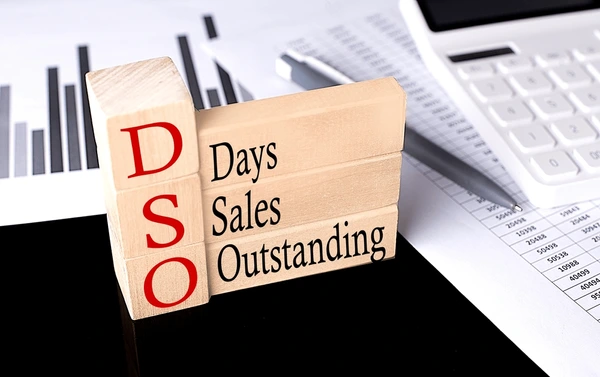
by Sophia Riley | Jun 26, 2025 | CFO
The role of the Chief Financial Officer (CFO) has expanded far beyond its traditional scope of financial reporting and accounting. Today, CFOs are expected to lead the charge in shaping a company’s financial strategy, fostering innovation, and ensuring long-term growth in a constantly changing environment. With rapid shifts in economic conditions, emerging technologies, and the increasing focus on sustainability, the modern CFO must evolve to meet these challenges head-on. At oAppsNET, we recognize the complexities CFOs face and offer solutions to help finance leaders navigate these new realities while driving business success. Let’s dive into the key trends that will define the CFO role in 2025 and beyond.
CFO Trends: Navigating Economic Volatility with Strategic Vision
In recent years, global markets have experienced fluctuations ranging from geopolitical unrest to rising interest rates. As we move through 2025, CFOs must embrace economic volatility as part of their strategic toolkit. This means honing their financial monitoring capabilities and being equipped with the ability to make data-driven decisions in real time. CFOs must focus on creating a strategic vision that can weather these economic changes, identifying risks and opportunities before they materialize.
The ability to predict and respond to shifts in economic conditions is critical. CFOs must also collaborate with other executives to ensure that financial strategies align with broader business objectives. This collaboration enables companies to remain resilient, even in times of uncertainty. At oAppsNET, we help CFOs leverage advanced financial analytics and real-time data integration to create a robust financial plan that anticipates economic shifts and ensures the company remains on a path of sustainable growth.
Leveraging Technology: Empowering the CFO with Innovation and Efficiency
As technology continues to transform the financial landscape, CFOs are increasingly relying on automation and artificial intelligence (AI) to streamline processes and boost efficiency. These technologies are no longer just nice-to-haves; they are essential for staying competitive in today’s fast-paced business world. AI and machine learning can help CFOs automate routine tasks, such as transaction processing and data analysis, freeing up valuable time for more strategic initiatives.
The use of cloud-based platforms is another pivotal shift. Cloud solutions enable faster and more efficient financial reporting, enhancing data accessibility across the organization. This allows CFOs to make more informed decisions, drive operational efficiency, and improve collaboration. At oAppsNET, we provide cutting-edge cloud-based solutions designed to optimize financial workflows, enabling CFOs to harness the full power of digital transformation and drive business results.
Mergers, Acquisitions, and Investment Decisions: A CFO’s Guide to Strategic Growth
Mergers and acquisitions (M&A) have always been crucial for companies seeking to expand, but in today’s environment, the stakes are higher than ever. The ability to make informed, strategic decisions about acquisitions and investments is vital for CFOs as they drive long-term growth. In 2025, CFOs will need to take a more holistic approach to due diligence, synergy assessments, and post-merger integration planning.
A strategic CFO doesn’t just evaluate the financials of an acquisition or investment—they assess how well the deal fits with the company’s overall goals. This includes considering potential cost savings, revenue growth, and operational efficiencies. Additionally, CFOs must be cautious about the impact on the company’s capital structure and overall financial health. With oAppsNET’s solutions, CFOs can leverage advanced analytics and predictive modeling to evaluate the long-term effects of acquisitions, helping organizations make better investment decisions and minimize risk.
Sustainability and ESG: A New Focus for the Modern CFO
Sustainability has evolved from a buzzword to a core aspect of business strategy. CFOs are now expected to integrate Environmental, Social, and Governance (ESG) factors into their financial decision-making. In 2025, sustainability will remain a driving force for the modern CFO, as they must not only ensure compliance with new regulations but also leverage sustainability as a growth opportunity.
For CFOs, this means managing ESG data efficiently, reporting transparently to stakeholders, and aligning financial strategies with long-term sustainability goals. Technology plays a pivotal role here, as AI and cloud platforms can streamline ESG reporting and help track progress against sustainability objectives. At oAppsNET, we provide the tools that allow CFOs to manage ESG reporting seamlessly, ensuring compliance while uncovering new opportunities for innovation and growth.
Building the Future Finance Team
The role of the CFO extends beyond managing financial health; it includes developing and leading the finance team. As technology reshapes the finance function, CFOs must prioritize talent development and ensure their teams possess the necessary skills to thrive in this evolving landscape. Technological literacy is becoming just as important as traditional financial skills, and CFOs must invest in upskilling their teams to adapt to emerging technologies such as AI, blockchain, and cloud-based financial tools.
Moreover, CFOs must foster a culture of innovation and collaboration, empowering teams to adapt to change and contribute to the company’s strategic objectives. Leadership in the finance function requires a balance of technical expertise and the ability to inspire and guide teams through transformation. With oAppsNET’s managed services and digital solutions, CFOs can enhance team capabilities, streamline training processes, and ensure their teams are ready to face the future.
Positioning the CFO for Future Success
The CFO’s role in 2025 and beyond will be marked by rapid transformation, technology adoption, and strategic leadership. As the financial stewards of their organizations, CFOs will be expected to lead in multiple areas, including financial monitoring, M&A decisions, driving sustainability, and building resilient teams. With the right tools and insights, CFOs can not only navigate these challenges but also seize new opportunities to propel their companies forward.
At oAppsNET, we understand the evolving demands of the CFO role. Our solutions provide CFOs with the technology, data, and expertise they need to succeed in today’s fast-paced business environment. Contact us today to learn how we can help you drive innovation, efficiency, and sustainable growth within your organization.

by Sophia Riley | Jun 24, 2025 | CFO
The role of the CFO has expanded dramatically in recent years, and with it, the expectations for financial leadership. The ability to thrive amidst volatility is a key trait for modern CFOs. In a time of unpredictable global events, a clear and adaptable financial strategy is essential for navigating challenges head-on. CFOs who stay agile can lead their organizations to new opportunities, driving business results through innovation and collaboration.
CFOs are no longer just guardians of the financial health of the organization—they are driving forces behind innovation and transformation. With ongoing market changes, leading companies ‘ business reinvention is crucial. In 2025, CFOs must embrace new technologies, new revenue streams, and refreshed business models to stay ahead. Transformation isn’t just about surviving—it’s about thriving through strategic investments, team collaboration, and an openness to the future.
Data-Driven CFOs: Leveraging Technology for Enhanced Financial Efficiency
In today’s data-rich world, CFOs must not only manage data but also use it as a tool for decision-making. Advanced analytics, cloud solutions, and AI provide CFOs with the ability to transform raw data into actionable insights. These insights can be pivotal in improving cash management, forecasting, and organizational transformation. With the integration of these technologies, CFOs will play a pivotal role in steering their companies toward greater efficiency and better-informed strategic decisions.
The Sustainability Shift: How CFOs Are Leading the Charge in ESG
As sustainability becomes a strategic priority for businesses worldwide, CFOs are at the center of driving ESG initiatives. In 2025, CFOs will take on an even more important role in shaping their company’s ESG strategy, integrating these initiatives into the company’s financial decision-making. By embracing technology and data, CFOs can streamline sustainability reporting, ensuring regulatory compliance while positioning the company for future growth. Sustainability is now a business imperative, and CFOs lead the way.
Building Financial Resilience: How CFOs Foster Trust and Navigate Risk
In a world where volatility is the new norm, CFOs are the pillars of financial resilience within their organizations. They are responsible for building trust with stakeholders, managing risk, and fostering an environment of agility and accountability. Financial resilience isn’t just about managing through crises—it’s about positioning the company for long-term success by embracing change, driving strategic communications, and empowering their teams to innovate.
The Office of the CFO: Preparing for the Future of Finance in 2025 and Beyond
The role of the CFO is evolving faster than ever, and 2025 will be a pivotal year in shaping the future of the finance function. Today’s CFOs must not only manage finances but also act as strategic leaders who embrace technology, innovation, and sustainability. They will be responsible for driving long-term growth, optimizing business processes, and leading organizational transformation. As the office of the CFO evolves, it’s critical for CFOs to be equipped with the right tools and strategies to lead confidently in an ever-changing environment. To stay ahead of the evolving landscape and position your business for success in 2025, contact oAppsNET today and let us help you transform your financial strategy with innovative solutions and expert guidance.

by Sophia Riley | Jun 20, 2025 | CFO
Days Sales Outstanding (DSO) is a crucial financial metric that evaluates how effectively a company collects cash from its credit sales. Simply put, DSO measures the average number of days it takes for a business to collect payment from its customers after a sale has been made. For CFOs and financial managers, understanding and optimizing DSO is essential to maintaining healthy cash flow, minimizing liquidity risks, and ensuring the company’s operational efficiency.
In a competitive business environment, the faster you can convert sales into cash, the more flexible and agile your company will be. oAppsNET, a leader in digital transformation and financial optimization, knows that improving DSO is one of the smartest moves you can make to enhance your company’s financial health. But before we dive into how you can improve DSO, let’s take a closer look at the metric itself and its significance for businesses like yours.
The Importance of DSO: Why It Matters
DSO is a working capital metric that measures the average time it takes for a company to collect cash from credit purchases. This ratio helps businesses determine how efficiently they manage their receivables and overall liquidity. A lower DSO suggests that the company is collecting payments quickly, improving cash flow, and freeing up funds for reinvestment or debt reduction. On the other hand, a higher DSO indicates that cash collections are taking longer, which could signal potential cash flow problems or inefficiencies in the collections process.
Monitoring DSO gives businesses valuable insight into their credit policies, operational efficiency, and customer relationship health. Financial managers can use DSO to assess whether their company is on track to meet its cash flow targets or if adjustments need to be made in the accounts receivable (A/R) process.
How to Calculate DSO
To calculate DSO, the following formula is used:
DSO = (Average Accounts Receivable / Net Revenue) × 365 Days
Where:
- Average Accounts Receivable is the average of the beginning and ending accounts receivable balances over a period.
- Net Revenue is the total revenue after returns, allowances, and discounts.
- The 365 days factor adjusts the ratio yearly, making it easier to compare DSO across periods.
A Simple Example of DSO Calculation
Let’s walk through a simplified example of calculating DSO.
Assume a company has the following data for the year:
- Beginning Accounts Receivable: $150,000
- Ending Accounts Receivable: $180,000
- Net Revenue: $1,200,000
To calculate the average accounts receivable, we would take the sum of the beginning and ending accounts receivable and divide by 2:
Average Accounts Receivable = ($150,000 + $180,000) / 2 = $165,000
Now, we apply the formula for DSO:
DSO = (Average Accounts Receivable / Net Revenue) × 365
In our example:
DSO = (165,000 / 1,200,000) × 365 = 50.3 days
This means that, on average, it takes the company 50.3 days to collect payment from its customers after a sale has been made.
A DSO of 50 days might be considered standard for some industries, but for others, it could be a sign that there’s room for improvement in the collections process. In general, companies strive to reduce their DSO to speed up cash conversion and maintain more working capital for reinvestment or growth.
High DSO vs. Low DSO: What Do They Indicate?
The value of DSO varies by industry and business model, but understanding whether a company’s DSO is high or low is key to improving cash flow management.
High DSO
A high DSO indicates that a company is taking longer to collect payments from its customers. While this can provide short-term benefits, like increased working capital, it’s not always sustainable. If DSO is too high, it could signal:
- Inefficiencies in the collections process: Slow follow-ups or poorly managed accounts could allow invoices to age longer than necessary.
- Customer issues: Customers may be experiencing cash flow issues or pushing back on payments, potentially jeopardizing long-term relationships.
- Risk of bad debts: If payments are delayed too long, there’s an increased risk that some receivables may go unpaid, impacting the company’s liquidity.
A high DSO should be closely monitored, as it may lead to cash flow problems that hinder operational capabilities, investments, or debt repayments.
Low DSO
A low DSO, on the other hand, typically means that a company is collecting payments quickly, which can benefit liquidity. However, there are also potential drawbacks:
- Missed opportunities for working capital optimization: Paying off creditors too quickly may result in less available cash for short-term investments or operational needs.
- Relationship strain: If a company aggressively collects payments too quickly, it could damage supplier relationships or result in lost discounts for early payments.
An ideal DSO should allow a company to strike a balance between collecting payments in a timely manner without sacrificing supplier relationships or missing opportunities to maximize cash.
How to Improve DSO
Improving DSO is essential for maintaining strong cash flow. Here are a few strategies that can help reduce DSO and optimize the receivables process:
1. Streamline the Invoicing Process
Ensure invoices are sent promptly, accurately, and include all necessary details. The faster and more precise the invoicing process, the quicker customers can pay.
2. Offer Discounts for Early Payments
Encouraging customers to pay early with attractive discounts can help shorten DSO and boost liquidity.
3. Automate Collections
Using automated reminders and payment follow-ups ensures that customers are reminded before payments become overdue. This reduces the lag time between invoicing and collection.
4. Implement Credit Policies
Establish clear credit policies, such as offering different payment terms depending on customer reliability. This can help prevent payment delays and improve cash flow.
5. Negotiate Payment Terms
Where possible, negotiate payment terms with customers that allow you to collect payments quicker, without harming customer relationships.
The Role of DSO in Financial Health
Understanding and optimizing Days Sales Outstanding (DSO) is key to improving your company’s cash flow and working capital management. Whether you aim to reduce DSO to increase liquidity or find the right balance to improve supplier relationships, this metric offers a clear view into the efficiency of your company’s credit and collections practices.
At oAppsNET, we specialize in providing businesses with the tools and insights needed to streamline their financial processes, from accounts receivable management to real-time cash flow tracking. Let us help you optimize your DSO and take your business’s financial strategy to the next level. Reach out today to discover how our automation and digital solutions can improve your cash flow and financial health.

by Sophia Riley | Jun 14, 2025 | CFO
In today’s fast-paced business environment, managing cash flow effectively is paramount for sustaining operations and fueling growth. For finance leaders, Days Payable Outstanding (DPO) is one of the most important financial ratios to track. This ratio measures how long it takes a company, on average, to pay its bills, including invoices from suppliers, vendors, and creditors. By understanding DPO, businesses can make informed decisions about their liquidity, operational efficiency, and financial flexibility. At oAppsNET, we understand that optimizing cash flow is crucial for long-term business success, and DPO is a powerful tool in that process.
Understanding DPO and Its Importance
Simply put, DPO calculates the average number of days it takes a company to pay its outstanding bills. While this sounds simple, the insights it provides are crucial for assessing how well a company manages its short-term liabilities and available working capital. Companies with higher DPO values are retaining cash for longer periods, giving them the opportunity to use that capital for other investments or short-term needs. However, a high DPO isn’t always a positive sign—it may indicate cash flow challenges, potential supplier dissatisfaction, or missed early payment discounts.
Conversely, a low DPO can indicate that a company is paying its bills quickly, which may suggest effective cash flow management and positive relationships with suppliers. However, a low DPO might also imply that the company is not utilizing its cash to its fullest potential, potentially missing opportunities for short-term investments.
To calculate DPO (Days Payable Outstanding), the formula is:
DPO = (Accounts Payable × Number of Days in Period) / Cost of Goods Sold (COGS)
Where:
- Accounts Payable is the amount the company owes to suppliers or creditors.
- Number of Days in Period is typically 365 for a year or 90 for a quarter.
- COGS (Cost of Goods Sold) is the direct costs associated with producing the goods sold by the company.
This formula helps you gauge how long it typically takes to settle your company’s outstanding debts. The higher the DPO, the more time your company takes to pay suppliers, which may indicate that you are strategically holding onto your cash longer. While this can be a smart business practice for leveraging available capital, if pushed too far, it may signal financial distress or difficulty meeting obligations.
High vs. Low DPO: What It Means for Your Business
High DPO: Benefits and Risks
A high DPO can indicate that your company is managing cash flow effectively. By delaying payments, a business can use its cash for other purposes, like paying down debt, investing in short-term opportunities, or bolstering working capital. This is particularly beneficial for companies with tight cash flow or those that need flexibility in their spending.
However, a high DPO also carries potential risks. Extended payment terms could strain relationships with suppliers, who might eventually impose stricter payment terms or even refuse to extend credit. Additionally, companies with high DPO might miss out on early payment discounts that could have improved profitability. If DPO becomes excessively high, it might indicate poor liquidity management, or worse, that the company is unable to pay its obligations in a timely manner.
Low DPO: Benefits and Challenges
A low DPO typically indicates that a company is paying its bills quickly. This could be a sign of good cash management, strong supplier relationships, and the ability to maintain timely payments. Suppliers may be more inclined to offer favorable terms, discounts, or other incentives to companies that honor payment deadlines promptly.
However, a low DPO might not always be ideal. It suggests that the company is not maximizing its available cash for other investments or working capital needs. Essentially, the company may be missing opportunities to leverage cash and improve short-term financial flexibility. Moreover, paying quickly could limit available funds for other urgent needs, potentially putting the company at risk during periods of financial strain.
DPO vs. DSO: Understanding the Difference
It’s important to distinguish between DPO (Days Payable Outstanding) and DSO (Days Sales Outstanding), as they are both critical to understanding cash flow but measure different aspects of the financial cycle.
- DPO measures the average time it takes a company to pay its suppliers after receiving goods or services.
- DSO, on the other hand, measures how long it takes a company to collect payment from customers after a sale.
Both DPO and DSO play crucial roles in determining the overall efficiency of a company’s working capital management. A mismatch between DPO and DSO can result in liquidity problems. For example, if a company offers customers 90 days to pay (a high DSO) but only gives suppliers 30 days to pay (a low DPO), it could face cash flow problems because the company is waiting for receivables to come in while needing to pay its suppliers immediately.
Improving DPO: Key Strategies
If your company is aiming to optimize its DPO, here are a few strategies to consider:
1. Negotiate Longer Payment Terms with Suppliers
One of the most straightforward ways to improve DPO is by negotiating longer payment terms with your suppliers. If you can extend payment deadlines, you can hold onto your cash for a longer period, improving liquidity. However, it’s important to balance this approach to avoid damaging supplier relationships.
2. Leverage Electronic Payments
Switching to electronic payments can speed up processing times, allowing you to make payments more efficiently and manage cash outflows more effectively. Automated payment systems can also reduce the risk of late payments and ensure that you’re optimizing the timing of your cash outflows.
3. Monitor Accounts Payable Regularly
To maintain an optimal DPO, you need to regularly track and manage your accounts payable. Review your outstanding invoices, ensure timely payment, and adjust terms as necessary. This will help you strike the right balance between paying bills on time and maximizing cash flow.
4. Utilize Early Payment Discounts
While a higher DPO may be desirable in certain contexts, early payment discounts offer financial incentives that shouldn’t be overlooked. Where possible, consider using your available funds to pay suppliers early and take advantage of discounts, which can contribute to cost savings and enhance supplier relationships.
Striking the Right Balance
Days Payable Outstanding (DPO) is a critical metric for assessing how well your company manages cash flow and vendor relationships. Striking the right balance is key, whether you aim to extend DPO to optimize working capital or reduce it to maintain supplier relationships and financial flexibility.
By using intelligent automation tools like those provided by oAppsNET, businesses can gain real-time visibility into accounts payable and optimize payment strategies, improving DPO and overall financial health. Contact oAppsNET today to learn how we can help your business automate and streamline cash flow management, ultimately improving your working capital efficiency.

by Sophia Riley | Jun 10, 2025 | CFO
Understanding key performance indicators (KPIs) like return on equity (ROE) is essential for finance professionals, especially those in the CFO’s office. DuPont Analysis is one of the most effective methods for breaking down ROE into its components and uncovering the drivers behind a company’s profitability. Originally developed by DuPont in the 1920s, this robust analytical framework helps businesses see the bigger picture of their financial health and understand where to focus their efforts for maximum impact.
At its core, DuPont Analysis enables CFOs and business leaders to go beyond a simple profitability figure and understand the internal levers—such as operating efficiency, asset utilization, and financial leverage—that directly impact a company’s economic performance. Whether you’re looking to identify inefficiencies or determine the right balance between debt and equity, DuPont Analysis offers valuable insights that help businesses survive and thrive in today’s competitive landscape.
Breaking Down DuPont Analysis: The 3-Step Model
The 3-Step DuPont Analysis model is a straightforward approach to assessing the drivers of ROE. By breaking down ROE into three key components—net profit margin, asset turnover, and financial leverage—the model helps business leaders understand how each element influences overall profitability. Here’s how it works:
1. Net Profit Margin:
This ratio measures how much profit the company generates from its revenue after all expenses. It reflects how well the company controls its costs and manages its operations to maximize profit. If the net profit margin is low, the business might need to address cost control or improve pricing strategies to increase profitability.
2. Asset Turnover:
This ratio assesses the efficiency with which a company uses its assets to generate sales. Simply put, it’s about how well assets are utilized to drive revenue. A high asset turnover suggests that the company is efficiently using its resources, while a low ratio could indicate underutilized assets or inefficient asset management.
3. Financial Leverage:
Also referred to as the equity multiplier, this component measures the degree to which a company uses debt to finance its operations. It reflects how much financial risk the company takes by using leverage. While some leverage can amplify returns, too much debt can lead to high interest expenses and increase the risk of default.
The Benefit of DuPont Analysis for Modern CFOs
For modern CFOs, DuPont Analysis is more than just an academic exercise. It’s a strategic tool that allows them to make informed decisions about capital allocation, financial structure, and operational efficiency. By understanding how the three components of ROE interact, CFOs can optimize their economic strategies for better outcomes.
With DuPont Analysis, CFOs can:
- Evaluate Capital Efficiency: By focusing on net profit margin and asset turnover, CFOs can identify areas where capital is being underutilized and take action to optimize performance.
- Optimize Leverage: The financial leverage component helps CFOs strike the right balance between debt and equity, allowing for strategic growth without overexposing the company to financial risk.
- Improve Profitability: By understanding the interplay between margins, asset utilization, and leverage, CFOs can identify which areas to focus on to drive profitability and increase overall ROE.
Beyond the Basics: The 5-Step DuPont Model
While the 3-Step DuPont Model is powerful, the 5-Step DuPont Model takes the analysis to the next level by introducing more specific ratios that help pinpoint areas for improvement in greater detail. These additional components—tax burden, interest burden, and operating margin—give CFOs a more granular view of what drives the bottom line. Here’s a breakdown:
1. Tax Burden:
This ratio assesses the proportion of profits retained after taxes. A lower tax burden is a positive sign, as the company keeps more earnings post-tax.
2. Interest Burden:
This component evaluates how much interest expense reduces a company’s profits. CFOs can use this ratio to assess whether interest payments are taking a toll on the bottom line and determine whether refinancing or managing debt levels can improve profitability.
3. Operating Margin:
This ratio measures the company’s operating efficiency by measuring the profit generated from its core operations. A high operating margin indicates that the company is operating efficiently and effectively managing its direct costs.
Why DuPont Analysis is Crucial for Financial Decision-Making
In a volatile business environment, CFOs need a tool that provides insight into financial performance and guides strategic decision-making. DuPont Analysis helps CFOs see beyond traditional financial statements and highlights specific areas that require attention or improvement. By understanding which elements contribute to ROE, businesses can pinpoint operational inefficiencies, optimize their capital structure, and position themselves for sustainable growth.
Moreover, DuPont Analysis allows for better comparability with industry competitors. Regarding mergers, acquisitions, or ESG (Environmental, Social, and Governance) positioning, having a strong ROE analysis is essential for demonstrating financial resilience and creating shareholder value.
Unlocking Financial Efficiency with DuPont Analysis
In conclusion, DuPont Analysis is vital for any modern CFO looking to optimize financial performance and drive shareholder value. By breaking down ROE into its core components—net profit margin, asset turnover, and financial leverage—and using advanced models like the 5-Step DuPont Formula, CFOs can pinpoint areas for improvement and develop targeted strategies to boost profitability.
As a leading provider of financial automation solutions, oAppsNET is here to help businesses integrate intelligent financial analytics into their operations. With our expertise, CFOs can gain the insights they need to optimize ROE and build a sustainable, growth-oriented financial strategy.
Let oAppsNET help you unlock the power of DuPont Analysis and take your financial management to the next level. Reach out today to discover how our solutions can enhance your ROE and improve your bottom line.





